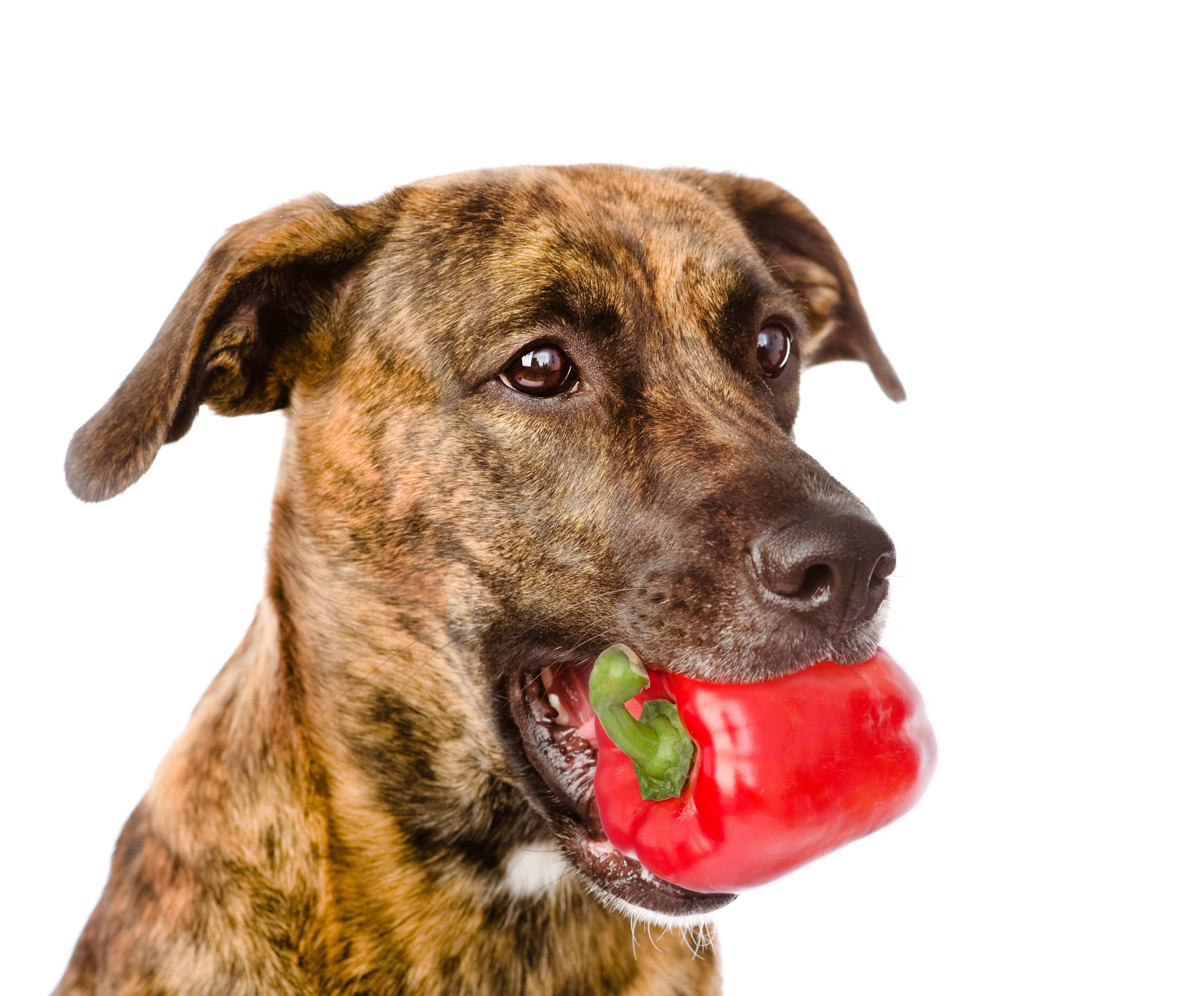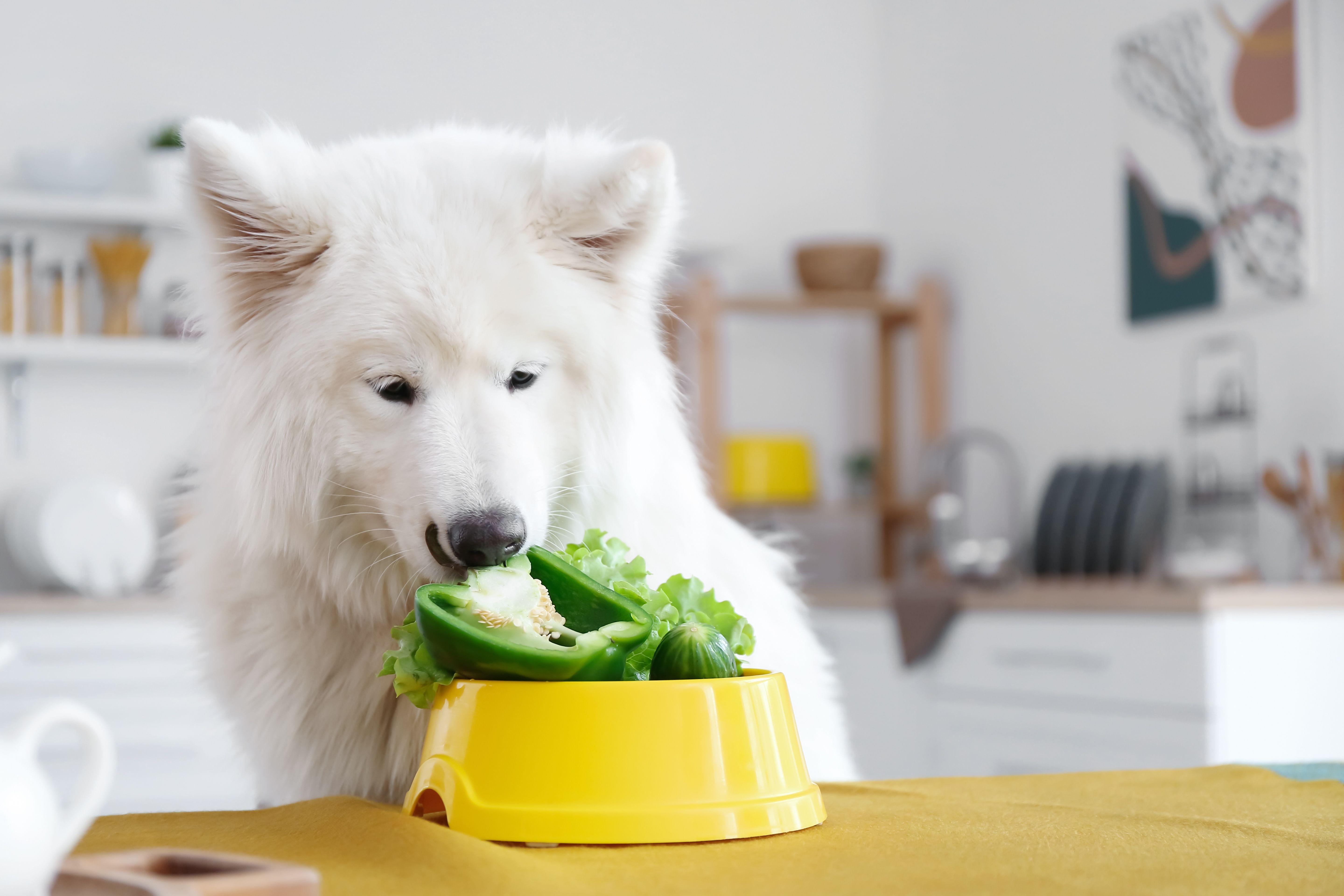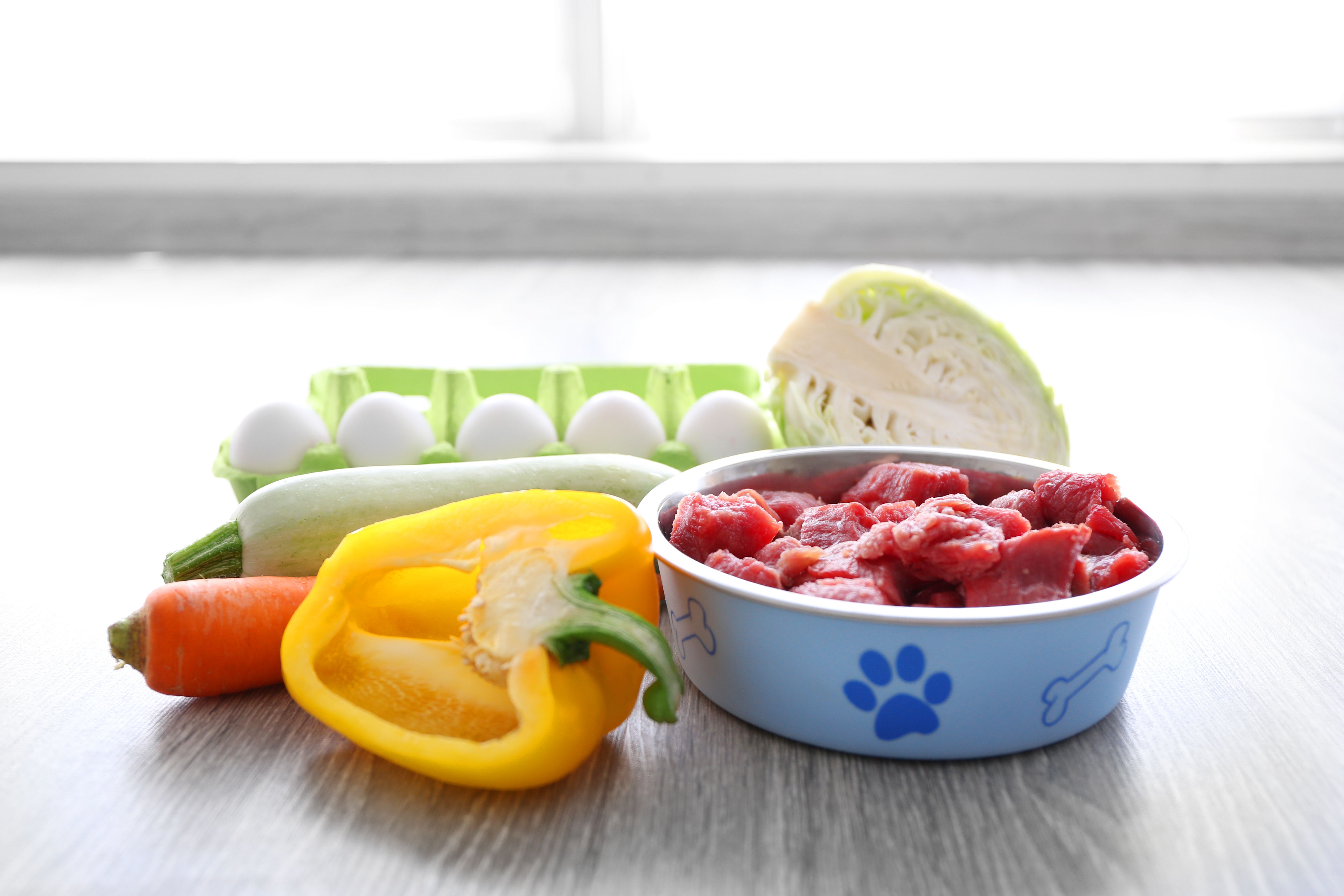If your dog is a picky eater and you’re on the hunt for a healthy, tasty treat, bell peppers could be just what you need. With their crunchy texture and sweet flavor, they’re a fun addition to your dog’s diet. However, it’s important to know whether they’re safe before adding them to your dog’s bowl.
Here’s everything you need to know about feeding bell peppers to your dog:
Can Dogs Eat Peppers?

Dog holding pepper.
Whether your dog can enjoy a pepper with their next meal will depend primarily on the type of pepper you are considering. Spicy peppers, like jalapenos, may not be considered toxic, but they can cause significant digestive problems like nausea or painful stomach ulcers. However, bell peppers don’t contain the same irritants, making these crunchy vegetables a great addition to your dog’s food or a safe snack for a little something special.
You should always consult your vet when introducing new foods to your dog. They will know if there are reasons to be concerned about your dog, including medical problems that could be made worse by eating this vegetable or the possibility of bad interactions with medications or supplements your dog is taking.
How Many Bell Peppers Can Dogs Eat?

Dog stealing food from fridge.
Like any other treat, your dog should be given bell peppers in moderation. Even highly nutritious vegetables can cause an upset stomach in large quantities. Smaller dogs and toy breeds can enjoy approximately 2-3 slices of bell pepper daily, while larger dogs can safely enjoy half a bell pepper each day.
It is important to note that some dogs will experience allergies or sensitivities to peppers. This may significantly limit how many they can enjoy before feeling sick if they can stomach any at all. Start small if this is your first time giving bell peppers as a snack. Offer your dog a few small bites and pay attention to his or her reaction. Watch not only for signs of an allergic reaction, like itching or skin irritation but also to see if your dog likes the taste.
How Should You Prepare Bell Peppers for Dogs?

Cute Samoyed dog eating vegetables at table in kitchen.
Not all parts of the bell pepper are safe for your dog. Before feeding, remove the seeds and stem. Cut the pepper into bite-sized pieces to avoid choking. Can dogs eat bell peppers raw? Yes! In fact, that is the most common way to offer these vegetables as a snack.
You can also cook peppers, which may be helpful for several reasons. First, peppers can be challenging for some dogs to chew—especially if they have dental problems. Lightly steaming bell peppers before serving them can soften the outer skin, making them easier to eat while maintaining all the nutritional benefits.
Other safe cooking options include boiling or roasting them. You can also puree the cooked peppers to make a spreadable snack suitable for use with your favorite lick mats. Avoid using any seasoning, including salt, or adding other ingredients that could make this snack unsafe (like onions). Some herbs, like cilantro, can offer additional health benefits when added in moderation.
The Benefits of Bell Peppers for Dogs

Portrait of a dog with a plate of fresh vegetables
Not only are bell peppers safe for dogs, but they also have some great health benefits. One crucial point to be aware of is that red bell peppers have higher amounts of vitamins and minerals than the other colors. If you want to leverage the following health benefits, red peppers are the best option.
Here are a few reasons you may want to consider adding bell peppers to your dog’s next meal:
Boost The Immune System
Bell peppers are packed with many vitamins and minerals, including high levels of vitamin C. We recognize the power of vitamin C to fight colds and illnesses in humans, but this powerful vitamin can strengthen your dog’s immune system. Don’t wait until your dog is sick to prioritize health. Adding a healthy source of vitamin C into your dog’s diet is an excellent way to prevent trouble.
Improve Skin and Coat Health
In addition to vitamin C, bell peppers are a great source of vitamins A and E. Together, these vitamins support skin and coat health, protect skin cells, and keep your dog looking their best. This is a good place to start if you are looking for a natural way to make your dog’s coat shine.
Leverage Anti-Inflammatory Properties

A veterinarian-nutritionist makes a diet for the Yorkshire Terrier from meat, fruits, and vegetables.
Dogs struggling with arthritis or recovering from a joint-related injury can benefit from this vegetable. Bell peppers contain several nutrients and chemical properties that offer anti-inflammatory benefits, such as capsaicin, quercetin, and phytochemicals. While they aren’t going to provide an instant fix for joint issues, they can help reduce inflammation, offering short-term relief from the pain and discomfort.
Prioritize Vision and Eye Health
Vitamins A, C, and E, lutein, and zeaxanthin are all essential for supporting healthy eyes and are found in bell peppers. They work to protect the eyes from damage and age-related degeneration, encourage the growth of new, healthy tissues, and lower the risk of cataracts.
Low-Calorie Snack
Whether you are trying to help your dog lose weight or maintain a healthy weight and lifestyle, finding low-calorie and enjoyable snacks is a must. Bell peppers are a great option to spoil your dog with a little something special. You can also cut them into smaller pieces to use as training treats if your dog loves them enough to be motivated by them.
A Final Word on Bell Peppers for Dogs

Organic dog food in a bowl on a wooden floor.
When given in moderation, Bell peppers can be a healthy addition to your dog’s diet. These crunchy vegetables offer a variety of health benefits, including vitamins to boost their immune system, anti-inflammatory properties to provide much-needed relief for dogs with arthritis, and more. However, it’s important to consult your veterinarian before introducing a new food, especially if they have underlying health problems.
Before feeding bell peppers to your dog, remember to remove the seeds and stem. If your dog is smaller, or if you want to use your peppers as a training treat, cut them into small pieces. You can also prepare them in different ways, such as steaming or roasting, to make them more appealing to your dog or easier to eat.
Bell peppers are a great option to give your dog a nutritious and enjoyable treat!







Your writing is like a breath of fresh air in the often stale world of online content. Your unique perspective and engaging style set you apart from the crowd. Thank you for sharing your talents with us.